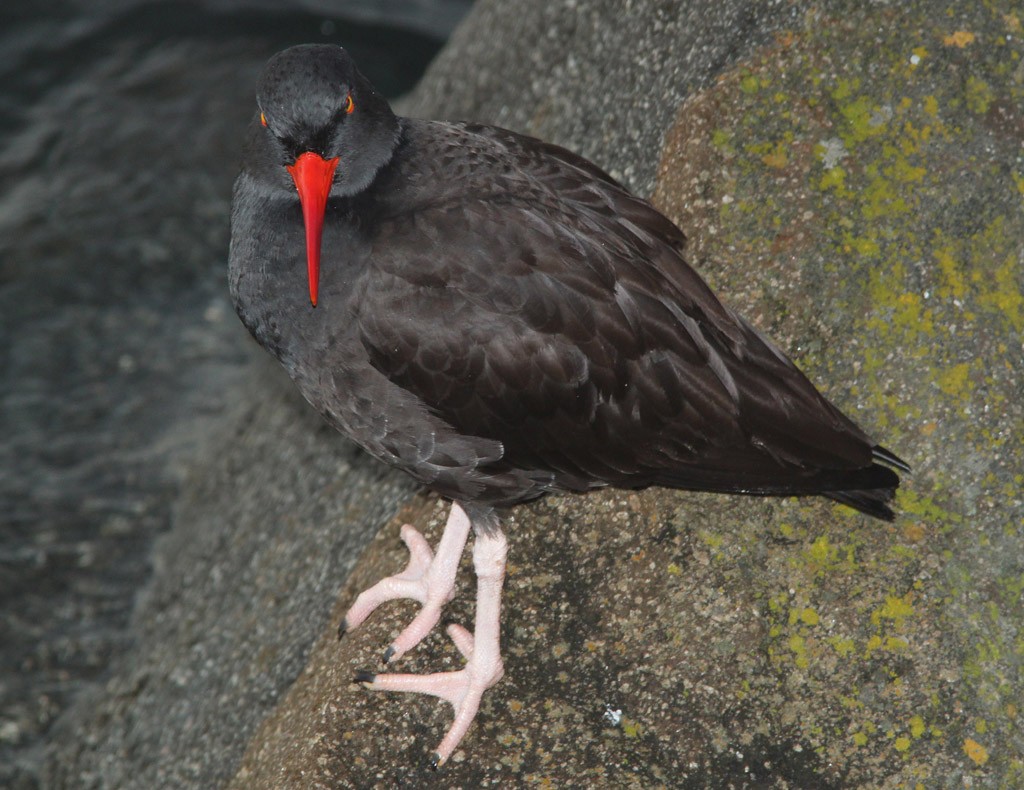Black Oystercatcher
A species of Oystercatchers, Also known as White-legged Oyster-catcher Scientific name : Haematopus bachmani Genus : Oystercatchers
Black Oystercatcher, A species of Oystercatchers
Also known as:
White-legged Oyster-catcher
Botanical name: Haematopus bachmani
Genus: Oystercatchers
Content
Description People often ask General Info
Description
The black oystercatcher is a large entirely black shorebird, with a long (9 cm) bright red bill and pink legs. It has a bright yellow iris and a red eye-ring. Its plumage varies slightly from north to south, being darker further north. 
Size
44 cm (17.5 in)
Life Expectancy
9-16 years
Nest Placement
Ground
Clutch Size
1 - 4 eggs
Feeding Habits
Black Oystercatcher primarily consume mollusks and other sea creatures from rocky intertidal zones, hunting visually during rising and falling tides when bivalves like mussels open their shells. They use their bills to pry open, chisel off, or probe for prey, which includes mussels, clams, limpets, crabs, sea urchins, and occasionally worms and isopods.
Habitat
Black Oystercatcher thrives along the Pacific Ocean's marine coastal regions, preferring rocky shores and sea islets, especially with flat or gently sloping terrains. At sea level, their habitats are characterized by moderate climates due to oceanic influence and often contain shelly, gravelly, or sandy materials for nesting. While primarily dependent on intertidal zones for food, they sometimes explore nearby grasslands. Protective bays and harbors serve as refuges during harsh weather.
Nest Behavior
Black Oystercatcher's nesting begins with the male creating several scrapes, from which the female chooses one. Both sexes carry nesting materials. They practice synchronous spring egg-laying and jointly provide parental care.
Nest Characteristics
Black Oystercatcher nest above high-tide lines on rocky shorelines, headlands, or shell-strewn beaches with minimal vegetation. Nests may be simple scrapes in ground or have bits of rock, pebble, or shell, are about 8 inches across and 1 inch deep.
Dite type
Aquatic invertebrate eater
People often ask
General Info
Feeding Habits
Bird food type
Behavior
Black Oystercatcher exhibit a strong pair bond, with couples displaying year-round monogamy. Their daily life includes performing elaborate paired flight and walking displays, especially as breeding season approaches. They maintain territories where they vigilantly engage in behavioral displays against intruders. Black Oystercatcher partake in cooperative breeding, with both parents sharing incubation duties and educating their offspring in foraging post-fledging, reflecting their social and nurturing nature. After breeding, some black Oystercatcher stay in their territories, while others join flocks in food-abundant regions, indicating a fluid social structure that oscillates between territoriality and gregariousness depending on the season.
Species Status
Not globally threatened.
Scientific Classification
Phylum
Chordates Class
Birds Order
Shorebirds Family
Oystercatchers Genus
Oystercatchers Species
Black Oystercatcher 